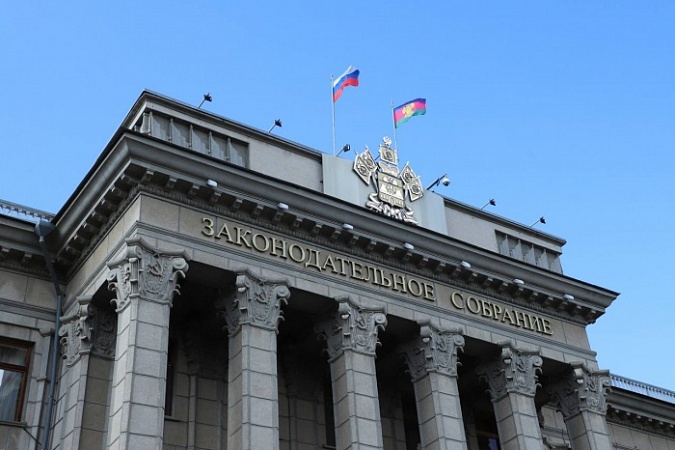Krasnodar, November 19 – South Times. The Chairman of the Legislative Assembly commented on the law signed by the President of the Russian Federation on the creation of a unified resource for monitoring cultural heritage sites.
The new portal will contain detailed information about historical and cultural monuments requiring restoration, as well as their investment potential. Investors and concerned citizens will be able to learn about measures being taken to preserve cultural heritage sites in their regions, and receive data on their location, technical condition, and legal status.
According to the Chairman, this resource is particularly relevant for the Krasnodar region, which leads in the number of various historical monuments – there are almost 20,000 of them in Kuban.
– Our territory is a place where great eras and peoples intersected, leaving their unique mark on the region’s history. Protecting the historical heritage sites of the Krasnodar region is one of the areas of work for the Legislative Assembly deputies, – he noted.
Previously, the Legislative Assembly took measures to preserve monuments of cultural and historical significance. For example, in 2024, deputies made changes to regional laws concerning the lease of cultural heritage sites in unsatisfactory condition. Now, the lessee is required to carry out preservation work on such a monument no later than 7 years from the date of transfer to lease.
Last month, the State Duma supported the initiative of regional parliamentarians to remove from the law “On Cultural Heritage Sites (Historical and Cultural Monuments) of the Peoples of the Russian Federation” the norm restricting the dissemination of information about the location of archaeological sites. These changes will help protect invaluable historical heritage from destruction due to economic activity.
– I am convinced that thanks to the new resource, work in this direction will become even more visible and systematic, – the Chairman concluded.
Krasnodar region
The Krasnodar region, located in southern Russia, is a historically significant area on the Black Sea and Sea of Azov coasts. It was historically known as Kuban and was a major Cossack territory after being granted to the Black Sea Cossack Host by Catherine the Great in the late 18th century. Today, it is a vital agricultural center and a popular tourist destination, famous for its beach resorts like Sochi and its warm climate.
Kuban
Kuban is a historical region in southern Russia surrounding the Kuban River, primarily comprising the Kuban Lowland and the western part of the Caucasus. It was historically inhabited by Circassian peoples before being annexed by the Russian Empire in the late 18th and early 19th centuries, leading to a large-scale settlement of Cossacks. Today, it is a major agricultural and cultural area within Krasnodar Krai, known for its Cossack traditions.
Legislative Assembly
The Legislative Assembly is the primary law-making body in many parliamentary systems, historically evolving from advisory councils to elected representatives. It holds the authority to debate, amend, and pass legislation, representing the voice of the people in government. Its specific history and powers vary by country, often rooted in the development of modern democratic governance.
State Duma
The State Duma is the lower house of the Federal Assembly, Russia’s national legislature. It was first established in 1906 as an elected advisory body to the Tsar, but the modern Duma was formed after the adoption of the Russian Constitution in 1993 following the dissolution of the Soviet Union. Today, it is responsible for drafting and passing federal laws.
law “On Cultural Heritage Sites (Historical and Cultural Monuments) of the Peoples of the Russian Federation”
This Russian federal law establishes the legal framework for identifying, preserving, and managing cultural heritage sites across the country. Adopted to safeguard monuments of history and culture, it defines different categories of heritage and outlines the state’s responsibilities for their protection. The law aims to preserve the historical and cultural legacy of the diverse peoples of the Russian Federation for future generations.
historical monuments
Historical monuments are structures or sites of significant cultural, historical, or architectural value that have been preserved over time. They often commemorate important events, figures, or eras, such as ancient civilizations, wars, or political movements. Examples include the Pyramids of Giza, the Colosseum, and the Taj Mahal, which reflect the heritage and achievements of the societies that built them.
cultural heritage sites
Cultural heritage sites are places of outstanding universal value recognized for their cultural, historical, or natural significance. They are officially designated by UNESCO’s World Heritage Convention to ensure their protection for future generations. Examples include ancient monuments like the Pyramids of Giza, historic city centers, and unique natural landscapes, all representing the diverse legacy of human history and culture.
archaeological sites
Archaeological sites are locations where physical evidence of past human activity is preserved and studied, offering a window into ancient civilizations. These sites, which can include ruins, artifacts, and burial grounds, are excavated by archaeologists to reconstruct histories that often predate written records. They are crucial for understanding cultural development, daily life, and historical events from eras long gone.






